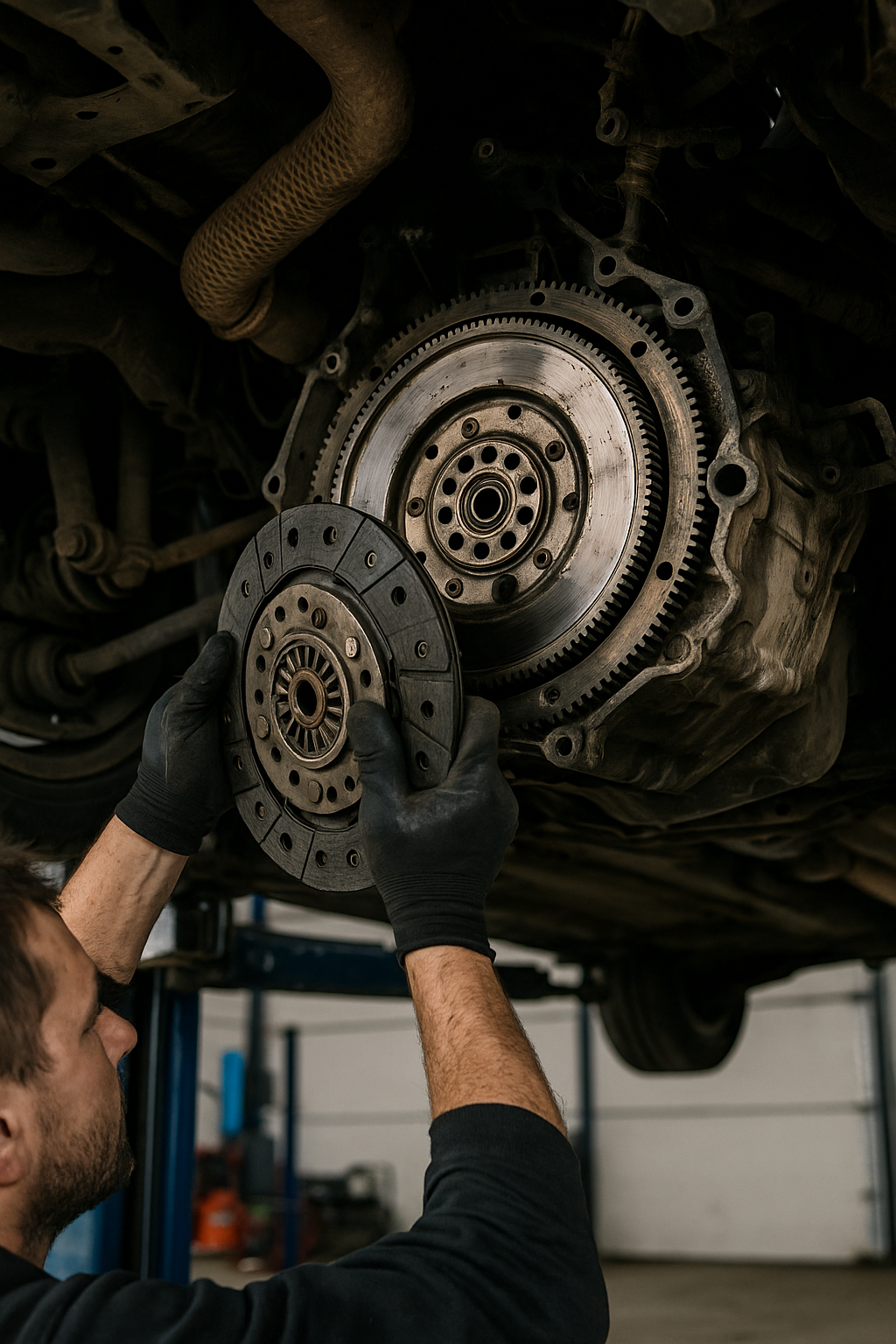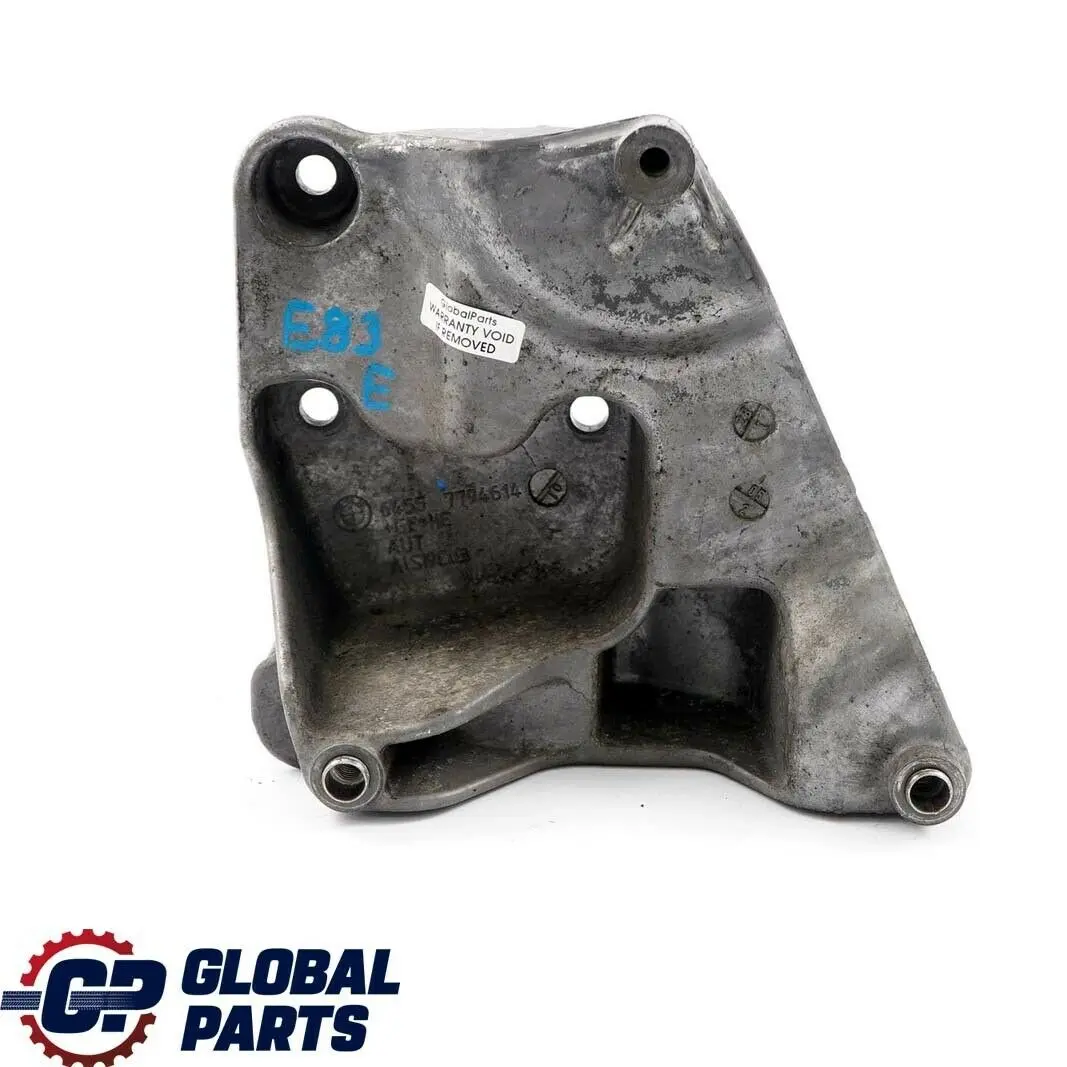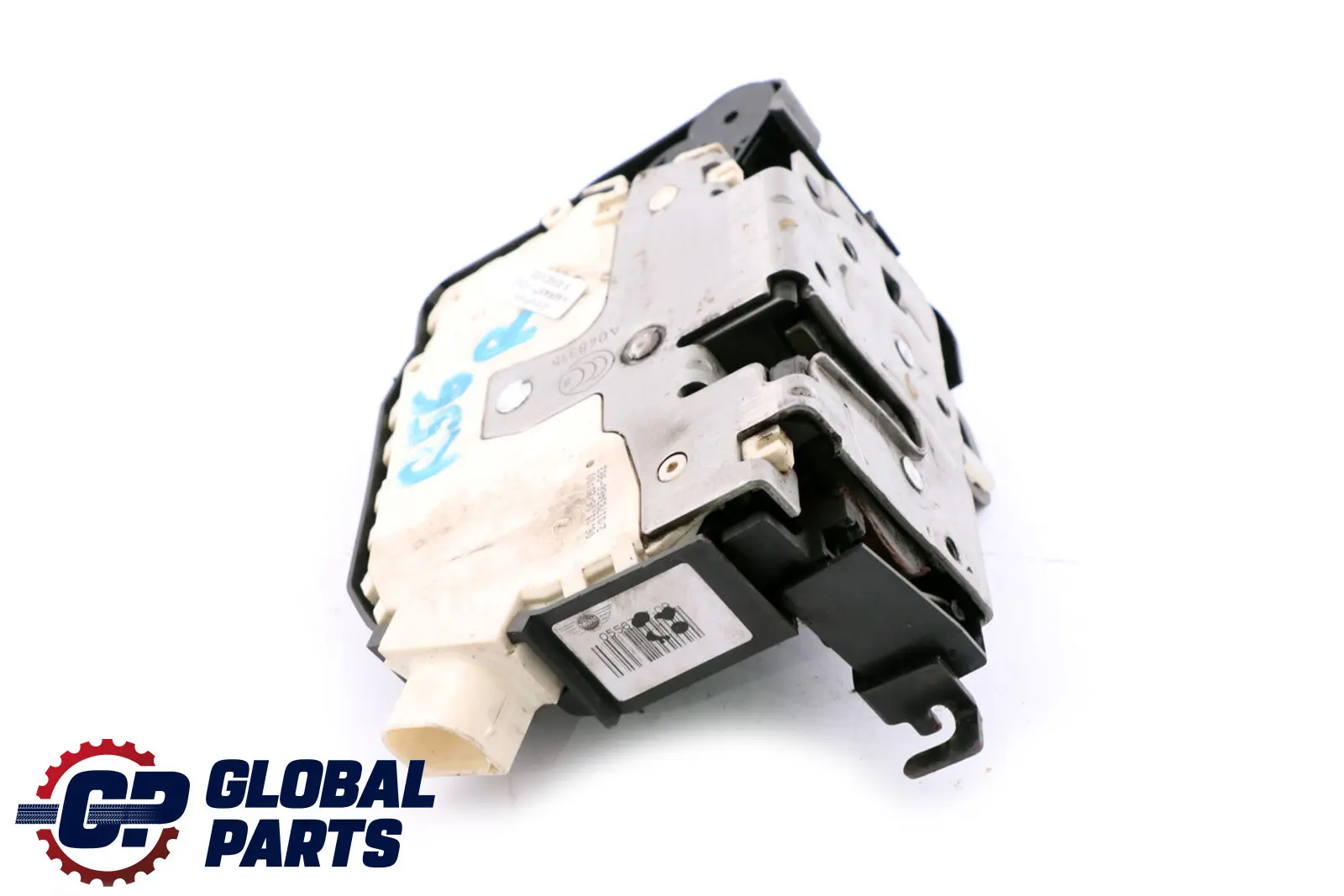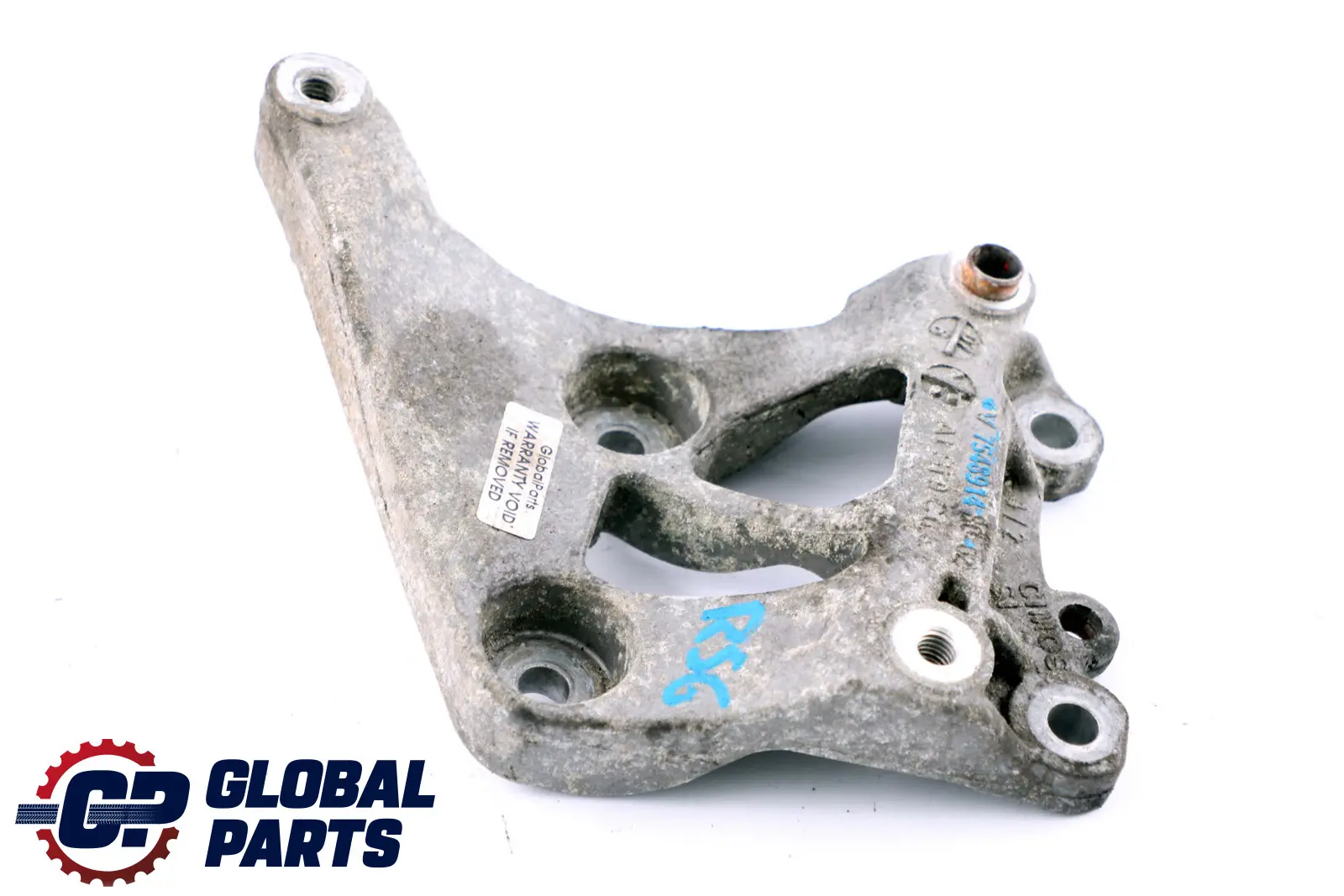Clutch and dual-mass flywheel – diagnostics and selection of parts for the drive system
The drivetrain only functions properly when the clutch and dual-mass flywheel dampen vibrations and seamlessly connect the engine and transmission. The most noticeable signs of wear include vibrations at idle, jerking when starting and shifting gears, and metallic noises when decelerating. In practice, complete replacement of the clutch lining and pressure plate components often makes more sense than patching the system, especially in high-mileage cars. Original used parts (used clutch, used dual-mass flywheel) can shorten installation time if they come from the same family and are inspected for play and cracks. The following section describes diagnostics, how to plan the selection of popular BMW, Audi, Mercedes, and MINI models, and how to synchronize work with the driveshaft and 4x4 drive. Global Parts helps verify the fit and availability of complete kits and assembly components.

Clutch – how it works and what wears out
The first impression under the foot is due to the force of the pressure spring and the interaction of the pad with the flywheel, so an uneven pedal height or a "rubbery" feel is a signal to check. The classic set consists of a disc with damping springs, a pressure plate and a release bearing (mechanical or hydraulic clutch release), and in cars with higher torque, a rigid disc and dual-mass flywheel are used. In petrol engines with a higher tachometer, the lining overheats more quickly during unsuccessful starts, while in diesel engines, the biggest enemy is low-end torque and driving in too low a gear. In everyday use, signs of wear include slipping under load (revs increase faster than speed), grinding when disengaging the clutch, and a very high "catch" point. It's always worth completing consumables with new disposable bolts and guide grease to avoid returning to the same job after a few weeks.
Clutch – typical cases in popular models
In the BMW E46 318i and E46 320i, symptoms often show not only the disc, but also the slave cylinder and flexible hose, so it's worth adding "disc + pressure plate + bearing + hose" to your shopping cart. In the BMW E90 318i and E90 320d, a complete set with the guide and pressure plate bolts is a common choice, as micro-play in the mounting quickly returns as vibration. The BMW E60 and BMW E87 118d clutch uses larger pressure plates and works more readily with a dual-mass flywheel, so mixing "period" components is a simple way to maintain smooth operation. In the MINI Cooper, the clutch wears out faster when city driving is dominant – a "disc + pressure plate + bearing" set, combined with improved bleeding, can eliminate the jerking. In Mercedes and Audi (e.g. A4 B8 2.0 TDI) it is worth planning the complete set with small parts in advance, because disconnecting the gearbox without preparation will result in a "second attempt".
Dual mass flywheel – role and numbers that help in the decision
The dual mass flywheel filters out the shaft's uneven operation and protects the gearbox from torsional vibrations, so knocking when turning off or "rattling" at idle are red flags. Workshop tests assess angular and radial play: clear "jumps," resistance without elasticity, or grease leakage indicate the end of the component's life. In diesel engines (BMW E90 320d 163 HP, E60 530d; Audi A3 8P 2.0 TDI), the dual mass flywheel is selected with the torque and wheel mass in mind – "lighter" solutions improve response but transmit more vibrations. In petrol engines (e.g., the BMW E87 118i as a reference to the diesel design in the family, or the petrol E90), the dual mass flywheel often lasts longer, although repeated sprints and cold "torture" build up play faster than highway mileage. When purchasing used components, only a dual-mass flywheel without leaks and with smooth, elastic movement makes sense - cracks and "dry" rotation rule out installation.
Dual Mass Flywheel – Model Examples and Tips
The dual-mass flywheel in the BMW E90 320d 163HP and the dual-mass flywheel in the BMW E60 530d have different masses and spring characteristics, so blind mixing reduces smoothness. In the BMW E87 118d, the dual-mass flywheel operates at a lower torque, which usually extends its lifespan under normal use. The dual-mass flywheel in the Audi A3 8P or the dual-mass flywheel in the Mercedes W211 is selected with consideration to the gearbox and gear ratios – a simple way to avoid "ringing." Where the supply of new indexes is limited, an original used part can be the quickest way to get back on the road. In each variant, new bolts and the correct torque are important – especially in diesel engines with high low-end torque.
Automatic Clutch - Hydrokinetic Clutch and What to Do with It
Converter ( hydrokinetic clutch) ) dampens the speed difference between the shaft and the automatic transmission, and the lock-up mechanically locks them in selected ranges. When the lock-up lining wears, vibration occurs at a constant speed or "floating" rpm, and dirty ATF worsens the symptoms. In the BMW E60 and Mercedes W211, it is typical to refresh the converter when replacing the pan/filter and flushing the oil cooler – this actually reduces operating temperatures. The phrase " torque converter price " stems mainly from labor and logistics; a used OEM converter can be a solution if the condition is confirmed and the plan includes replacing the ATF and filter. In everyday use of an automatic transmission, regular oil and filter changes shorten the list of "strange" vibrations that the driver associates with a worn engine.
Automatic machine – what to look for when selecting and installing
First, check the transmission type and control version (e.g., BMW E60 ZF automatics, Mercedes 5G/7G), as the lock-up maps differ in nature. It's worth checking the oil cooler and lines – a clogged cooler raises temperatures and damages the lock-up linings faster than the driver's temperament. After installing the converter and servicing the ATF, a gearbox adaptation and a short drive under constant load are necessary to confirm pressure stabilization. Automatic 4x4s prefer a consistent oil temperature – symptoms "when warm" are more often caused by the cooling system than by the software. For peace of mind, note the speed, gear, oil temperature, and any accompanying vibrations, which makes it easier to assess the effect.

Drive Shaft and 4×4 – When to Complete the Work
When removing the gearbox or dual mass flywheel, it's easy to align other drivetrain components, saving time and readjustment. In the BMW X3 E83 ( BMW X3 E83 driveshaft ) or in the Mercedes Vito 639 It makes sense to inspect the universal joints, supports, and flexible joints together – play quickly returns as vibrations after clutch repair. In the E90 and E60, the BMW E90/E60 530d driveshaft and accessory components should be inspected for cracks and leaks around the flanges and oil seals. In 4x4s, the transfer case and differential should also be inspected – consistent gear ratios and no leaks allow for smooth torque transfer. Sometimes, a damaged center shaft support "pretends" to be a worn clutch, so the schedule combines these works into one package.
Shaft and Joints - Quick Checklist
A short test includes checking for play under load, the condition of the support bearings, the elasticity of the joints, and any cracks in the boots. If vibrations increase with speed and disappear after releasing the throttle, the flexible joint or support bearing are the first suspects. After replacing the clutch/dual mass flywheel, it's worth performing a test drive at a constant speed and a light load – this best reveals problems with the driveshaft. In high-mileage cars, matching the tires to operating temperatures (frost/hot summer) reduces secondary vibrations. After any intervention in the drivetrain, it's useful to check the bolts and torque after a few hundred kilometers.
Parts selection – how to plan purchases and avoid multiplying labor costs
First, the symptoms are written down, then the plan is detailed: "clutch + pressure plate + bearing", "dual mass flywheel", or possibly "converter + ATF + filter + radiator flush". In the BMW E46 318i/E46 320i or BMW E90/E87 118d models, a complete set with small parts (screws, grease, guides) saves you from having to do the same job again. In the Audi A4 B8 2.0 TDI and A3 8P 2.0 TDI A one-time order works: dual mass flywheel + clutch + bolts + bearing – the gearbox doesn't have to be hoisted twice. A short basket is tempting for a MINI Cooper, but bleeding the air and the quality of the slave cylinder hose determine whether the car will regain its smoothness and repeatability. If you're opting for used parts, it's worth having one place to buy the kit, as a set from the same batch is usually installed more quickly.
Sample models and quick selection tips
BMW E90 320d clutch – plan a set with a bearing and guide; high bottom-end torque requires decent pressure. BMW E60 530d dual-mass flywheel – check the weight and type of springs, as "lighter" doesn't always mean better. BMW X3 E83 clutch – check the condition of the shaft support and flanges, otherwise the vibrations will return as a "false symptom" of the clutch. Audi A3 8P – with the 2.0 TDI, the dual-mass flywheel + clutch + disposable bolts package more often "wins." MINI Cooper clutch – after installation, a short bleeding cycle and a test drive at a constant speed is the easiest way to verify the improvement.
TABLE – symptom → possible cause → what to do?
| Symptom | Possible cause | What to do |
|---|---|---|
| Shaking when idling / knocking when turning off | dual-mass flywheel | angular/radial clearance assessment, replacement |
| Slipping under load | pressure plate/pads | set: disc + pressure plate + bearing, disposable screws |
| Jerks when starting | dirty/crooked pressure plate, clutch cable | kit + bleeding, hose inspection |
| Vibrations at constant speed (automatic) | converter/ATF | converter refreshing, ATF and filter replacement, adaptation |
| Vibrations increasing with speed | shaft/joints/supports | checking the joints and support bearings, test drive |
TABLE – models and quick tips
| Model | Part/set | Assembly note |
|---|---|---|
| BMW E46 318i/320i | clutch + clutch slave cylinder | flexible hose and vent |
| BMW E90 320d / 318i | clutch + guide + screws | high torque = solid pressure |
| BMW E60 530d | dual-mass flywheel | weight and springs according to the version |
| BMW E87 118d | clutch + dual mass flywheel (optional) | longer lifespan when driving calmly |
| Audi A4 B8 2.0 TDI | dual mass flywheel + clutch + screws | the gearbox does not return to the lift |
| Audi A3 8P 2.0 TDI | dual mass flywheel + clutch | easy gain of work culture |
| MINI Cooper | clutch + bleeding | constant speed test after assembly |
FAQ – Clutch and Dual Mass Flywheel: Diagnostics and Selection
| Question | Short answer |
|---|---|
| How to recognize a worn dual mass flywheel? | Knocking when turning off, vibrations when idling, lack of elasticity, grease leakage. |
| Why does the clutch slip under load? | The pad or clamp is not holding; replace the kit and screws, check the guide. |
| When should the converter in the machine be serviced? | If you feel vibrations at a constant speed or the revs are "floating", refreshing the converter and ATF may help. |
| Is a used clutch a good idea? | Yes, if it is an original part in good condition and from the same family; it is quicker to install. |
| Is it necessary to check the shaft when working on the clutch? | It's worth it - play in the support/joints returns as vibrations after clutch repair. |
| What should I order besides the disc and pressure plate? | Bearing/clutch release bearing, guide, disposable screws, grease; in automatic transmission: ATF, filter, seals. |
| How to plan 4×4 work? | Combine the clutch/dual mass flywheel with transfer case and differential control – fewer returns and better results. |



